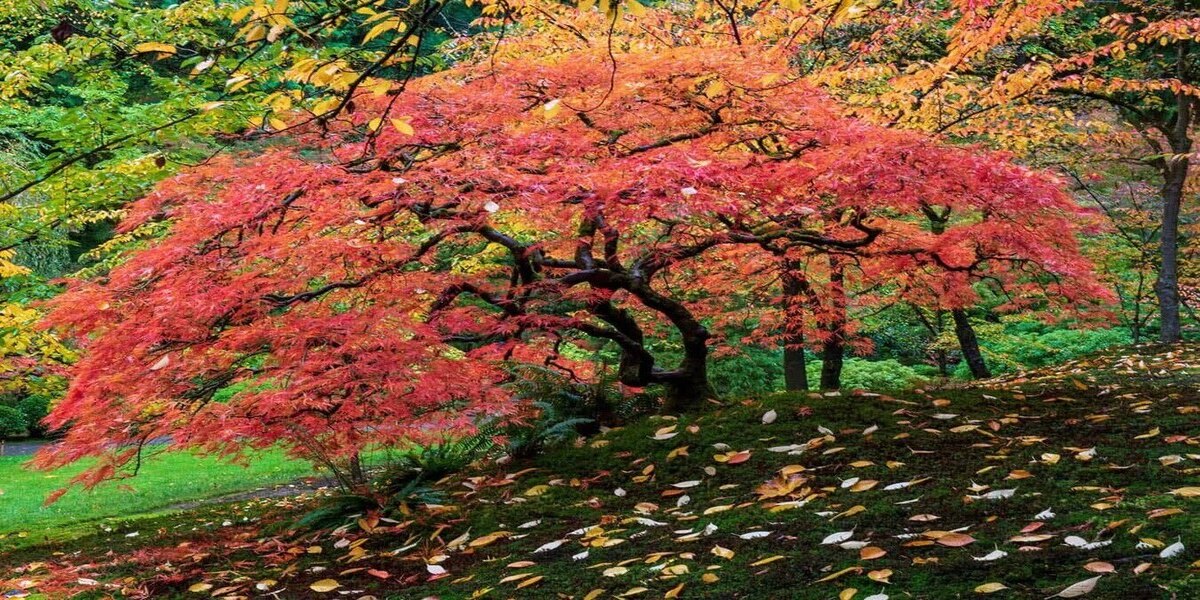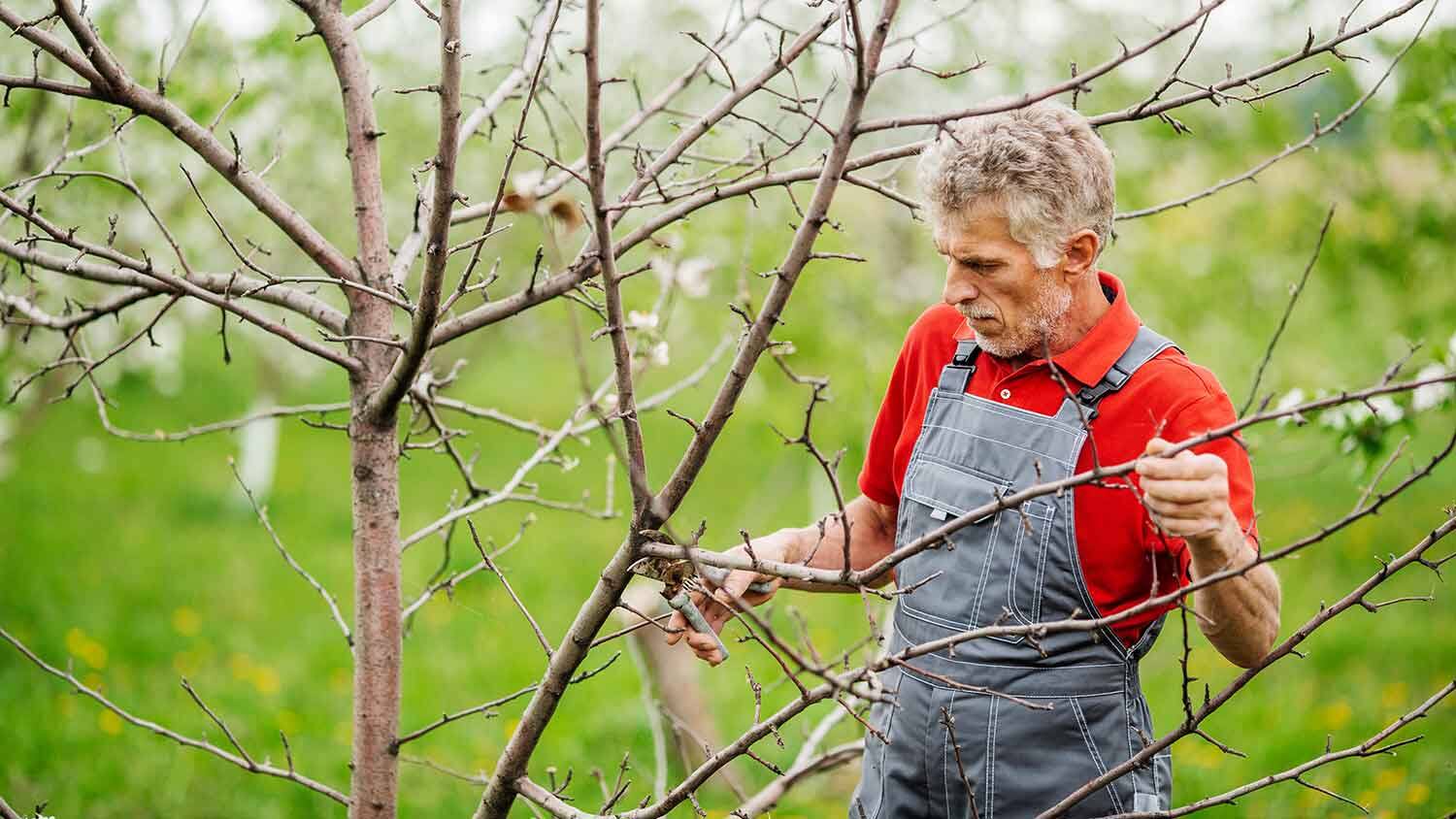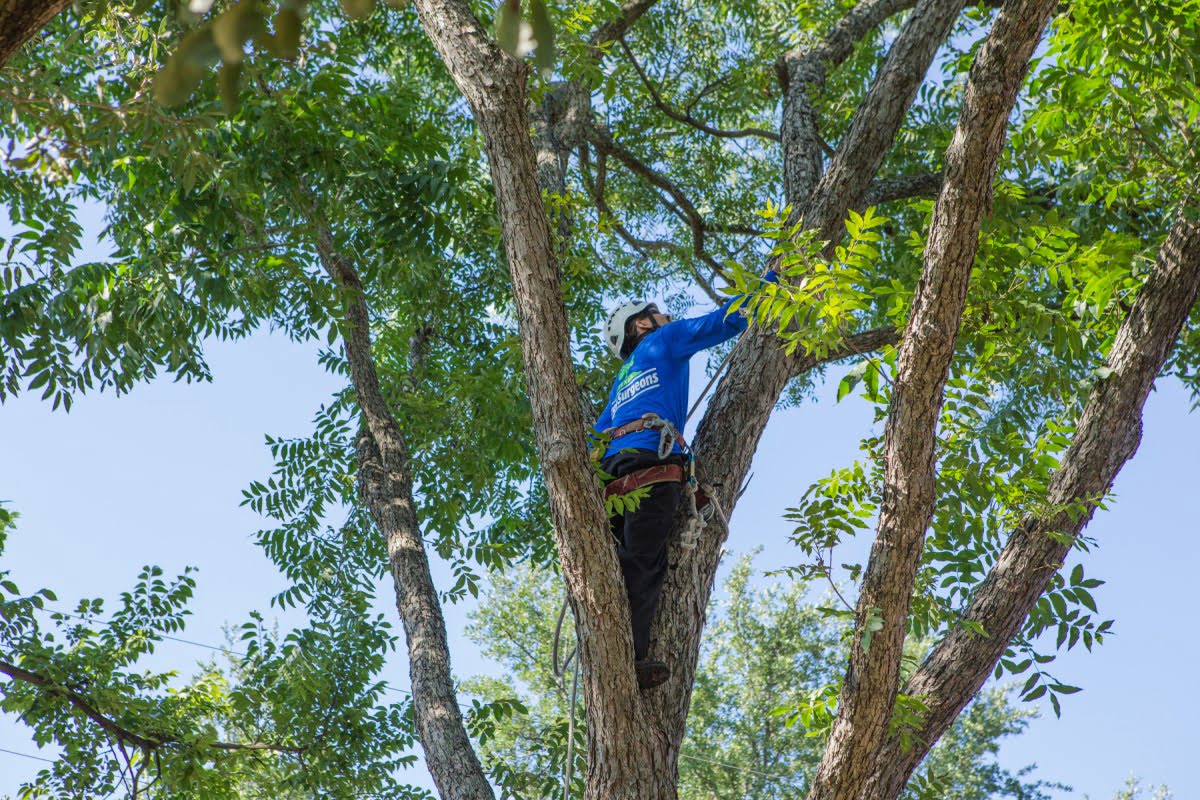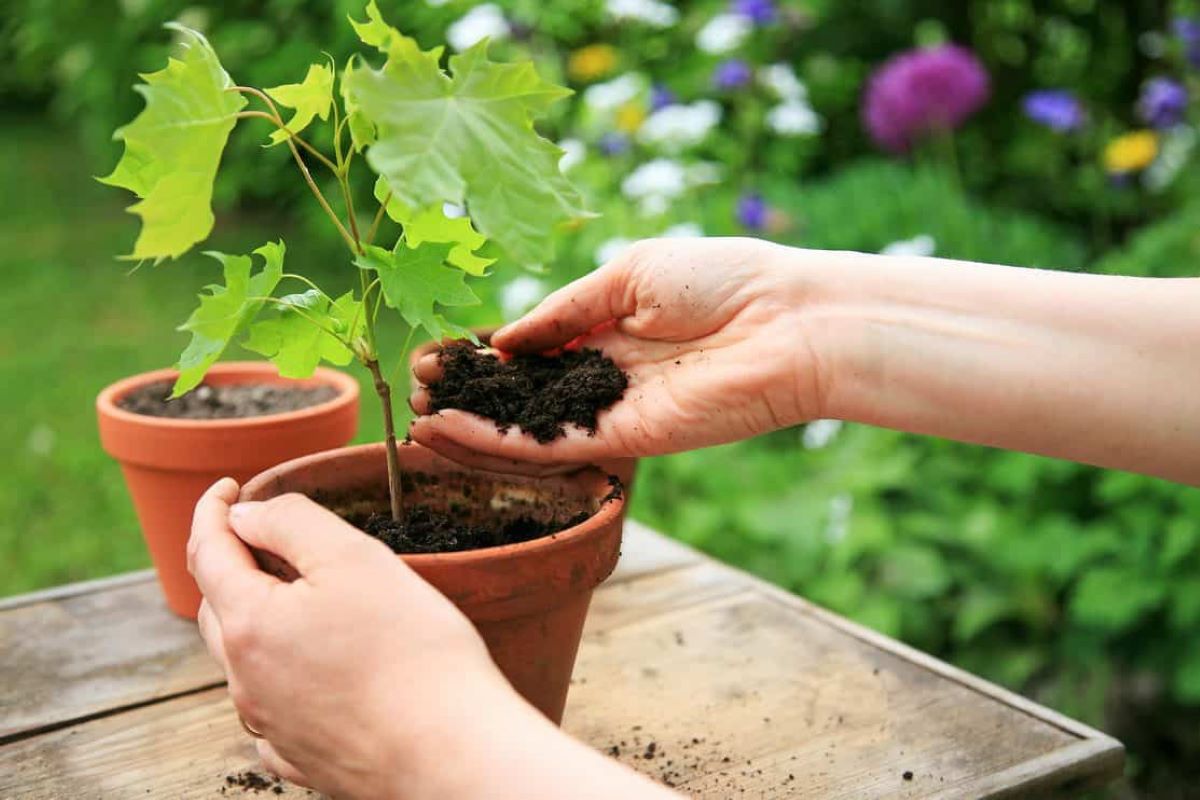Home>Gardening Techniques>Plant Care>When To Trim Maple Trees
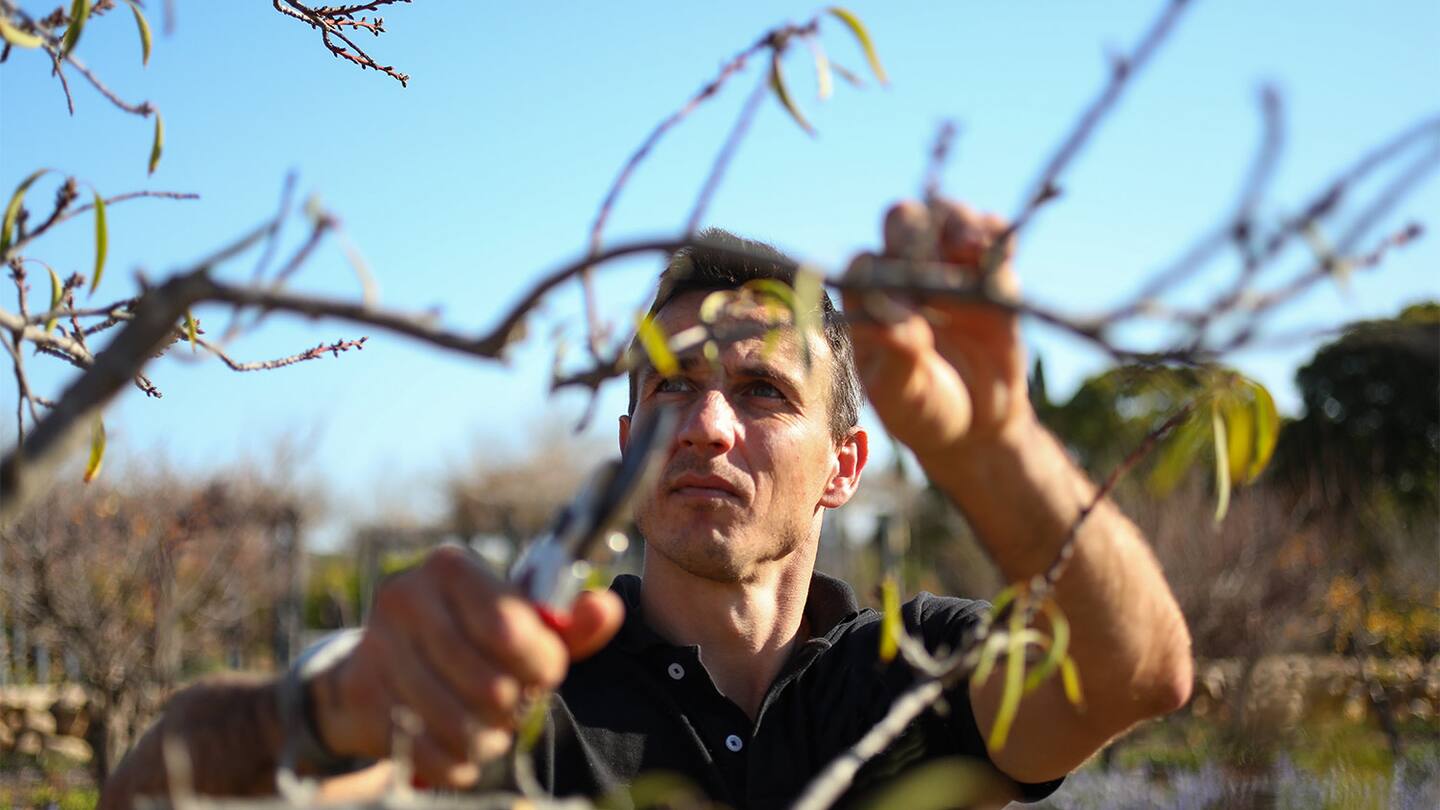

Plant Care
When To Trim Maple Trees
Published: November 8, 2023
Learn the best time to trim maple trees and essential plant care tips to keep your maples healthy and thriving. Discover expert advice for optimal maple tree maintenance.
(Many of the links in this article redirect to a specific reviewed product. Your purchase of these products through affiliate links helps to generate commission for Chicagolandgardening.com, at no extra cost. Learn more)
Table of Contents
Introduction
Welcome to the world of plant care! Whether you’re a seasoned gardener or just starting to develop your green thumb, understanding how to properly care for your plants is crucial to their health and longevity. One important aspect of plant care is knowing when to trim trees, such as maple trees, to ensure their optimal growth and aesthetic appeal. Trimming trees not only helps maintain their shape but also promotes proper airflow and sunlight penetration, preventing disease and encouraging new growth.
Maple trees, known for their stunning foliage and strong, graceful branches, are a popular choice for homeowners and landscapers alike. However, maintaining maple trees requires occasional trimming to keep them healthy and enhance their visual appeal. In this article, we will explore the factors to consider before trimming maple trees, the best time to trim them, signs that indicate when pruning is needed, the tools and techniques for effective trimming, common mistakes to avoid, and the option of hiring a professional tree trimmer.
Before we delve into the specifics of maple tree trimming, it’s essential to understand that every plant has its unique growth patterns and requirements. What works for one type of tree may not be suitable for another. Therefore, it is crucial to familiarize yourself with the specific needs of maple trees to ensure that you provide them with the best possible care.
Properly timed and executed tree trimming not only improves the overall aesthetics of maple trees but also has several other benefits. It helps maintain the tree’s health by removing dead or diseased branches, prevents potential safety hazards by eliminating weak or overgrown branches, and stimulates new growth by encouraging the development of lateral branches. These lateral branches contribute to a well-balanced and attractive canopy, enhancing the tree’s overall appearance.
In the following sections, we will explore the various factors to consider before trimming maple trees, the best time to perform the task, and how to identify signs that indicate pruning is necessary. Additionally, we will discuss the essential tools and techniques required to carry out the trimming process effectively. So let’s dive in and discover the secrets to maintaining the health and beauty of your beloved maple trees!
Factors to Consider Before Trimming Maple Trees
Before grabbing your pruning shears and climbing up your ladder, it’s important to consider a few key factors. These factors will help ensure that you approach maple tree trimming in the most effective and responsible manner:
- Tree Health: Assess the overall health of the maple tree before trimming. Look for signs of disease, pest infestation, or structural issues that may require professional intervention. It is essential to address any underlying health concerns before proceeding with trimming to avoid further damage.
- Tree Dormancy: Understanding the dormancy cycle of maple trees is crucial. It is generally recommended to trim maple trees during their dormant period, which is typically in late winter or early spring before new growth begins. Trimming during this time minimizes stress on the tree and allows for optimal healing before the growing season begins.
- Environmental Conditions: Take into account the prevailing weather conditions before trimming. Avoid trimming maple trees during extreme temperatures, such as freezing winters or scorching summers. Trimming during mild weather conditions ensures better recovery and reduces the risk of damage to the tree.
- Tree Size and Age: Consider the size and age of the maple tree when planning to trim. Younger trees require less extensive pruning compared to older, more established ones. For young maple trees, focus on training the branches to grow in the desired direction, while older trees may require more substantial pruning to remove dead or overcrowded branches.
- Targeted Trimming Goals: Determine your specific trimming goals before starting. Are you aiming to enhance the tree’s shape, remove damaged branches, improve air circulation, or promote new growth? Having a clear objective will guide your trimming decisions and ensure that you achieve the desired results.
By carefully considering these factors before trimming, you can approach maple tree maintenance with confidence and ensure that your efforts are beneficial to the tree’s overall health and appearance. Understanding the needs of your maple tree and planning accordingly will result in a successful and rewarding trimming experience.
Best Time to Trim Maple Trees
Timing is crucial when it comes to trimming maple trees. Choosing the appropriate time ensures that the tree’s health is not compromised and that it can recover effectively. The best time to trim maple trees is during their dormant period, which is typically in late winter or early spring before new growth begins.
Trimming maple trees during this period offers several benefits. Firstly, the tree’s energy is focused on root development rather than foliage growth during dormancy. By trimming during this time, you minimize stress on the tree and allow it to allocate its resources towards healing and regrowth.
Additionally, trimming maple trees before the growing season allows you to shape the tree and remove any dead, diseased, or damaged branches, promoting overall tree health. Trimming during the dormant period also reduces the risk of disease transmission, as many pathogens are less active or dormant at this time.
It’s important to note that weather conditions also play a role in determining the best time to trim maple trees. Extreme temperatures, such as freezing winters or scorching summers, can negatively impact the tree’s ability to recover from pruning. Therefore, it’s ideal to trim maple trees during mild weather conditions, when the risk of damage to the tree is minimal.
If you find it challenging to determine the exact timing for trimming your maple trees, consulting with a professional tree trimmer or arborist can provide valuable guidance. They have the expertise and knowledge to assess the specific needs of your maple trees and recommend the most suitable trimming schedule based on your location and climate.
Remember, each tree is unique, and factors like geographic location and climate can influence the timing for trimming maple trees. Observing the tree closely and considering the local conditions will help you determine the best time to perform the necessary pruning, ensuring the health and beauty of your maple trees for years to come.
Signs That Indicate Maple Trees Need Trimming
Regularly assessing the condition of your maple trees is essential to identify when trimming is necessary. By recognizing the signs that indicate the need for pruning, you can address issues promptly and maintain the health and aesthetics of your trees. Here are some common signs to look out for:
- Dead or Diseased Branches: If you notice dead or diseased branches on your maple tree, it’s crucial to remove them promptly. Dead branches not only detract from the tree’s appearance but can also pose a safety hazard. Pruning these branches ensures the overall health of the tree by preventing the spread of disease and allowing for new growth.
- Overgrown or Crossed Branches: Overgrown or crossed branches can cause structural problems and hinder healthy growth. They can rub against each other, leading to damage and potential entry points for diseases or pests. Trimming away these branches promotes better airflow and reduces the risk of branch breakage, promoting the overall health of the tree.
- Branches Blocking Structures or Walkways: If the branches of your maple tree are obstructing structures, walkways, or interfering with power lines, it’s important to trim them back. This not only ensures safety but also prevents potential damage to property. Trimming these branches allows for unobstructed access and ensures the tree does not interfere with surrounding structures.
- Thinning or Stunted Growth: If your maple tree is experiencing thinning or stunted growth, it may indicate the need for pruning. Thinning the canopy allows more sunlight to reach the inner branches, promoting healthy growth and improving overall foliage density.
- Unbalanced Canopy: An unbalanced canopy can create a lopsided or asymmetrical appearance. Trimming the branches to achieve a more balanced canopy enhances the tree’s visual appeal and ensures that the weight is distributed evenly.
Additionally, it’s important to note that regular tree inspections should be a part of your routine maintenance. This will help you identify any signs of disease, pest infestation, or structural issues that may require professional intervention. Consulting with a professional arborist or tree trimmer can provide valuable insight and guidance in assessing whether your maple tree needs trimming and the extent of pruning required.
By staying vigilant and taking action when these signs manifest, you can effectively maintain the health and beauty of your maple trees. Regular trimming not only improves the aesthetics of the tree but also ensures its longevity and ability to thrive in its environment.
Tools and Techniques for Trimming Maple Trees
When it comes to trimming maple trees, having the right tools and employing the appropriate techniques is essential to ensure a successful and safe pruning process. Here are some of the essential tools and techniques to consider:
Tools:
- Pruning Shears: Pruning shears, also known as hand pruners or secateurs, are essential for cutting small branches and twigs. Look for shears with sharp blades and comfortable handles to make clean and precise cuts.
- Loppers: Loppers are designed to cut thicker branches that are beyond the capacity of pruning shears. Invest in a sturdy pair of loppers with long handles for improved reach and leverage.
- Pole Pruner/Saw: For reaching higher branches, a pole pruner or pole saw can be immensely helpful. These tools consist of a telescopic handle with a pruning saw attached to the end, allowing you to trim branches without the need for a ladder.
- Chainsaw: In the case of larger branches or significant tree pruning, a chainsaw may be necessary. However, using a chainsaw requires experience and caution, so it is recommended to consult a professional if you are not familiar with its operation.
- Safety Gear: Always prioritize safety when trimming maple trees. Wear protective gloves, safety goggles, and a helmet to shield yourself from potential hazards. Consider using a safety harness or working with a trained professional when working at heights or dealing with large branches.
Techniques:
- Proper Cuts: When performing the actual trimming, always make clean and precise cuts. Angle the cut slightly away from the trunk or main branch, leaving a small collar. Avoid leaving stubs, as they can invite disease and pest infestations.
- Prune Branch Collars: The branch collar is the swollen area where a branch attaches to the trunk. When pruning branches, make sure to cut just outside the branch collar to avoid damage to the main trunk and promote proper healing.
- Thinning vs. Heading Cuts: When trimming maple trees, it’s important to understand the difference between thinning and heading cuts. Thinning cuts involve removing a branch back to its point of origin, while heading cuts involve cutting a branch back to a bud or lateral branch. Understanding when to use each technique helps shape the tree and promote healthy growth.
- Step Back and Assess: Throughout the trimming process, step back periodically to assess the tree’s shape and ensure a balanced appearance. This allows you to make further adjustments if needed and achieve the desired result.
Properly maintaining and sharpening your tools regularly is also important to ensure clean cuts and the longevity of your equipment. Remember to follow safety guidelines and consult with a professional if you are unsure about any aspect of trimming or if the job requires specialized equipment or expertise.
By using the right tools and employing the correct techniques, you can trim your maple trees effectively and promote their health and beauty for years to come.
Mistakes to Avoid When Trimming Maple Trees
Trimming maple trees requires careful attention and proper technique to ensure the health and appearance of the tree. It’s important to avoid common mistakes that can potentially harm the tree or hinder its growth. Here are some mistakes to avoid when trimming maple trees:
- Over-Pruning: One of the most common mistakes is over-pruning or removing too many branches at once. Over-pruning can shock the tree and weaken its overall health. It’s important to follow proper guidelines and avoid removing more than 25% of the foliage during a single pruning session.
- Topping the Tree: Topping, or excessive canopy reduction, involves cutting off the top of a tree without regard to its structure. This practice is harmful and can lead to significant stress and decay. Instead, aim for selective pruning to maintain the natural shape and structure of the maple tree.
- Improper Pruning Cuts: Making improper cuts can damage the tree and invite disease and pests. Avoid leaving stubs when pruning branches, as they can take longer to heal and create a pathway for infections. Additionally, avoid cutting too close to the trunk, as this can damage the branch collar, hindering the tree’s ability to heal properly.
- Trimming During the Wrong Season: Timing is crucial when it comes to trimming maple trees. Trimming during the wrong season can disrupt the tree’s growth cycle and leave it vulnerable to disease or pest infestation. Avoid trimming maple trees during their active growth period and focus on pruning during the tree’s dormant stage in late winter or early spring.
- Ignoring Safety Precautions: Safety should never be overlooked when trimming maple trees. Always wear appropriate protective gear, including gloves, safety goggles, and a helmet. Use a sturdy ladder or consider using professional tree climbing equipment when working at heights. If the job requires significant tree pruning or involves large branches, consider hiring a professional tree trimmer for your safety and the well-being of the tree.
It’s important to approach maple tree trimming with care and respect for the tree’s natural growth patterns. Taking the time to understand proper pruning techniques and avoiding these common mistakes will ensure that your maple trees remain healthy, vibrant, and enhance the beauty of your landscape for years to come. If you are uncertain about any aspect of pruning or if the task seems overly complicated, it’s always best to consult with a professional tree trimmer or arborist for guidance.
Hiring a Professional Tree Trimmer for Maple Trees
While many homeowners might feel confident in their ability to trim their maple trees, there are instances where hiring a professional tree trimmer is the best course of action. Professional tree trimmers have the experience, knowledge, and specialized tools to efficiently and safely trim maple trees. Here are some reasons why you might consider hiring a professional:
Expertise and Experience: Professional tree trimmers are trained to identify potential issues and provide tailored solutions based on the specific needs of your maple trees. They have extensive knowledge of tree physiology, growth patterns, and proper pruning techniques. Their expertise ensures that the tree is pruned in a manner that enhances its health and aesthetics while minimizing any potential risks.
Safety: Maple tree trimming can involve working at heights and handling potentially dangerous tools, such as chainsaws. Professional tree trimmers are equipped with the necessary safety equipment and have the experience to safely maneuver around trees, reducing the risk of accidents or injuries. They also adhere to industry safety standards and regulations to ensure a safe working environment.
Efficiency and Time-Saving: Trimming maple trees can be a time-consuming task, especially if you lack experience or proper tools. Professional tree trimmers have the expertise and equipment to complete the job efficiently, saving you valuable time and effort. They can handle large branches, reach tall trees, and complete the trimming process much faster than if you were to do it yourself.
Proper Equipment: Professional tree trimmers have access to a wide range of specialized tools and equipment designed specifically for trimming trees. These tools allow them to make clean and accurate cuts while minimizing stress to the tree. Using the right tools ensures that the tree is not damaged during the trimming process and promotes proper healing.
Insurance Coverage: Hiring a professional tree trimmer provides an added layer of protection through liability insurance. In the unlikely event of any damage to your property during the trimming process, the professional tree trimmer’s insurance coverage can help cover the costs of repairs or replacements.
When hiring a professional tree trimmer, it’s important to research and select a reputable and certified arborist or tree service company. Look for those with valid certifications, licenses, and insurance coverage. Request and review customer testimonials or ask for references to ensure their credibility and quality of work. By entrusting your maple trees to a professional, you can have peace of mind knowing that they will be trimmed with care and expertise.
While there are cases where homeowners may successfully trim their maple trees, hiring a professional tree trimmer offers numerous advantages in terms of safety, efficiency, and expertise. Consider your individual situation, the size and complexity of the trimming task, and the level of expertise required to make an informed decision on whether to hire a professional tree trimmer for your maple trees.
Conclusion
Caring for your maple trees involves understanding when and how to trim them effectively. By considering factors such as tree health, dormancy, environmental conditions, size, and targeted trimming goals, you can approach maple tree trimming with confidence. The best time to trim maple trees is during their dormant period in late winter or early spring, ensuring minimal stress and optimal healing.
Signs that indicate the need for trimming include dead or diseased branches, overgrown or crossed branches, branches blocking structures or walkways, thinning or stunted growth, and an unbalanced canopy. Recognizing these signs helps you address issues promptly and maintain the health and appearance of your maple trees.
When it comes to trimming maple trees, having the right tools and employing proper techniques is crucial. Pruning shears, loppers, pole pruners/saws, and chainsaws are some of the essential tools for the job. Techniques such as making proper cuts, pruning branch collars, and assessing the tree’s shape can ensure a successful trimming process.
Avoiding common mistakes like over-pruning, topping the tree, making improper cuts, trimming during the wrong season, and neglecting safety precautions is vital to maintaining the health of your maple trees. If in doubt or when faced with complex or large-scale trimming tasks, hiring a professional tree trimmer offers expertise, safety, efficiency, and access to proper equipment.
In conclusion, by understanding the factors to consider, the best time for trimming, signs that indicate the need for pruning, and employing proper tools and techniques, you can effectively trim your maple trees, enhancing their health, beauty, and longevity. Regular trimming ensures proper growth, improves airflow, and prevents potential safety hazards. Remember to prioritize safety, consult professionals if needed, and maintain a consistent tree maintenance routine to ensure the well-being of your beloved maple trees for years to come.
